25 Best Political Horror Movies
There is no such thing as an “obsession” with politics in horror. Social and political themes have always been a part of the genre. The greatest horror movies always have something important to say. Cataloged on this list are 25 of the best political horror movies.
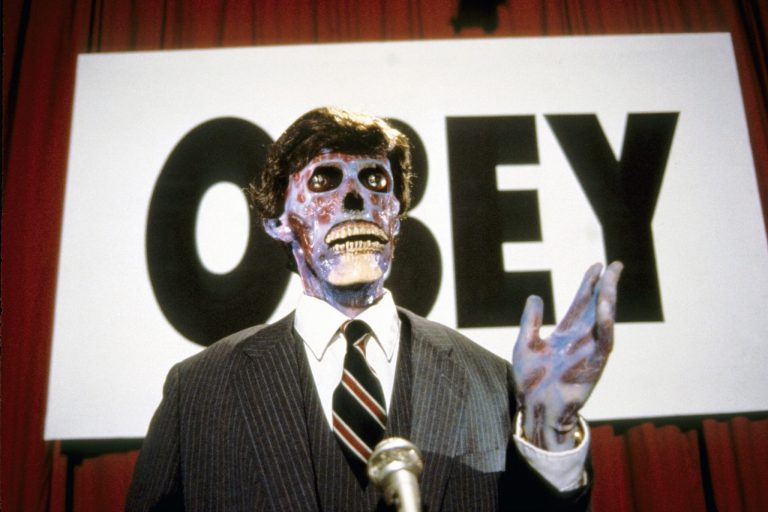
Horror is inherently political. Those who don’t like it, don’t truly understand the genre. Horror has had political and social commentary since its inception. The legendary silent film Häxan (1922), one of the earliest works of horror cinema, had a lot to say about religious zealousness, the patriarchal abuse and oppression of women, and the demonization of mental illness.
Pre-code horror films and movies during the era of Hays Production Code are imbued with sociopolitical subtext. Many monsters throughout the genre’s history were used to tell LGBTQ+ stories veiled as horror. Examples can be found in Universal Classic Monsters movies—the Monster in Frankenstein (1931), the Bride of Frankenstein (1935), Countess Marya Zaleska in Dracula’s Daughter (1936), and The Wolf Man (1941). Other queer-coded monsters include Count Orlok in Nosferatu (1922) and Irena in Cat People (1942). Irena’s story was also a meditation on immigration and assimilation, the American dream, and patriarchal oppression of women through psychoanalysis and control of their bodies. Invasion of the Body Snatchers (1956) can be read as either a satire of McCarthyism or an attempt to promote its Red Scare.

Many prominent horror filmmakers have made an art of their protest. George A. Romero’s unique way of criticizing the Western world crowned him the King of Political Horror. Beneath David Cronenberg’s grotesque body horror, there are dystopian, technological, social, environmental, and political underpinnings. Tobe Hooper’s gruesome The Texas Chainsaw Massacre (1974) is an allegory for the horrors and disillusionment of the Vietnam War. More recently, Jordan Peele’s Get Out (2017) served as a scathing meditation on current racial dynamics. Horror has and always will shed a light on the oppressive social and economic systems in place. The greatest horror movies bring uncomfortable, but necessary conversations to the table. They stand up for the marginalized and point accusatory fingers to the real monsters.
There is no shortage of political horror movies. Rounded up below are 25 of the genre’s best with the strongest commentary on our society and those who rule over it.
Night of the Living Dead (1968)

Although inspired by the climate of their respective times, George A. Romero’s sociopolitically charged films resonate to this day. In Night of the Living Dead, a group of people trying to fend off a horde of flesh-eating ghouls barricade themselves in an old farmhouse. The plot is deceptively simple, but the zombie film is anything but. This masterpiece is a critique of 1960s American society that examines class, racism, American social relations, Cold War paranoia, and what happens when societal systems break down. Romero reportedly didn’t intend to make it a film about race, but the gut-punch of an ending sends an undeniable message about race-based dehumanization and racial violence. Duane Jones, whose standout performance is one of the best in the genre, made history as the first Black lead in horror cinema with his role as Ben.
The Crazies (1973)
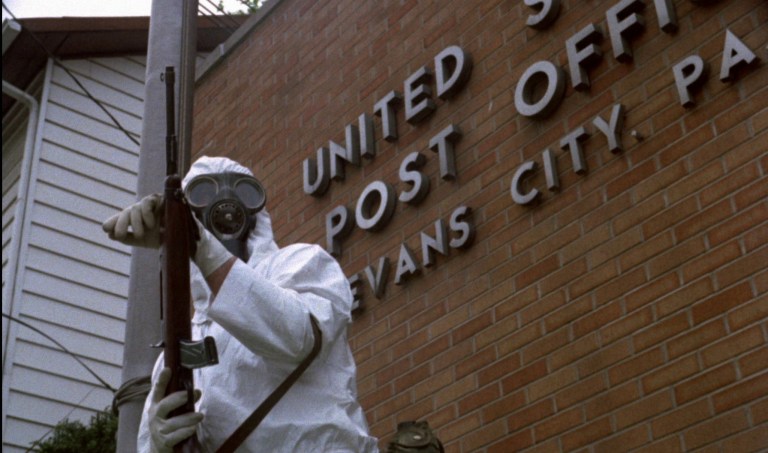
The Crazies is Romero’s most underappreciated work. His darkly satirical look at a small town in crisis has strong anti-government and anti-war messages. It takes a shot at imperialism, the military industrial complex, and how American citizens are treated as expendable by those in power. Evans City, Pennsylvania becomes infested with a virus after an Army plane carrying a biological weapon crashes nearby and seeps into the water supply. Those infected die or go mad and homicidal, rampaging through the streets and killing each other. The military tries but fails to control the situation, as scientists work for a cure. A few locals do their best to escape the government’s jurisdiction and find their way to safety.
The Stepford Wives (1975)

This list wouldn’t be complete without the patriarchal nightmare The Stepford Wives. Although this classic of second wave feminism lacks intersectionality, it laid down the foundation for future feminist horror. Bryan Forbes’ adaptation of Ira Levin’s eerie novel sees the outspoken Joanna Eberhart (Katharine Ross), a photographer, move from the city to the isolated suburb of Stepford with her husband Walter (Peter Masterson) and their two children. She may have gained a more spacious and beautiful house, but she starts losing herself in the seemingly idyllic town where every woman is subservient to her husband. Joanna comes to discover that the men of the town, threatened by the women’s liberation movement, schemed to create the “perfect” and docile wife. What the women lose in creativity, they gain in cooking and housekeeping abilities. Their independence gets traded in for sexual availability. Their voice for patriarchal beauty standards and a bigger breast size. Political metaphors of women’s inequality, cultural brainwashing, bodily autonomy, systemic oppression, and men’s resistance to feminist change ooze from the screen.
They Live (1988)

John Carpenter’s cult classic They Live is one of the greatest anti-capitalist films to have ever been created. It follows John Nada (Roddy Piper), a drifter in Los Angeles who comes across a pair of special sunglasses that allow him to see the world for what it truly is. Nada discovers subliminal messages in mass media are keeping people subdued and conformed. Running it all are the social and wealthy elite, who appear to be humans, but in actuality are corpse-looking aliens with bulging eyes. They live undetected among humanity, draining the earth and its indigenous inhabitants of resources and labor. The film was made in protest against 1980s Reagan America, the greedy 1%, unchecked capitalism, the commercialization of politics, and how those in power keep the working class subdued. They Live remains as relevant as ever.
Society (1989)
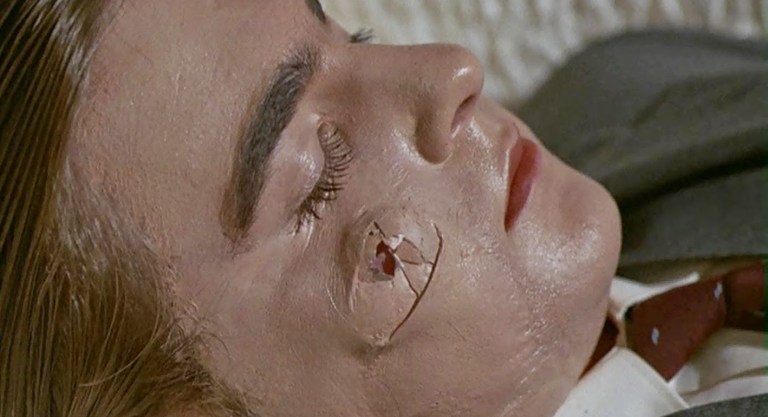
Society is a horror-comedy that blends body horror and social satire to give a revolting look at class division in America with a story where the rich come together to literally feed off the working class. It may have all the deranged trappings of a B-movie, but Society is a profound film with a powerful message about the inhumanity of those with money and power. Billy Warlock stars as Bill Whitney, a teenager who has always felt out of place within his high-society family and comes to suspect his wealthy parents are part of a sinister cult for the elite. Soon, he comes to discover a much more grotesque and insidious truth than he could have ever imagined. The disgusting, slurping “Shunting” ritual that takes place towards the end of the movie would make Father of Body Horror Cronenberg proud—don’t say you weren’t warned.
The People Under the Stairs (1991)
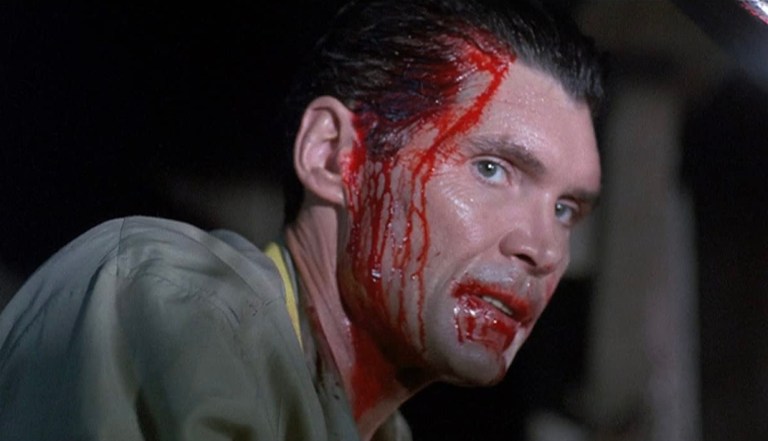
Wes Craven’s The People Under the Stairs is a portrayal of the Reagan era’s class and racial divisions. It protests against gentrification, racialized capitalism, and conservative and heteronormative values. The villains are a corrupt white landlord couple modeled after Ronald and Nancy Reagan, “Daddy” and “Mommy.” They’re gentrifying the neighborhood, stealing its resources, evicting people, and getting wealthier by keeping those around them poor. It doesn’t get more terrifying or real than those kinds of monsters. Poindexter “Fool” Williams (Brandon Adams), an impoverished young Black boy whose mother is in need of cancer surgery, breaks into their home with two others and discovers strange, pale children being held prisoner beneath the stairs. He becomes trapped and fights to escape the oppressive and violent house. Craven flipped the media’s racist script on its head to reveal the truth—it’s the white, wealthy or middle-class, individualistic, conformist bunch who are the real boogeymen.
The Purge (2013)
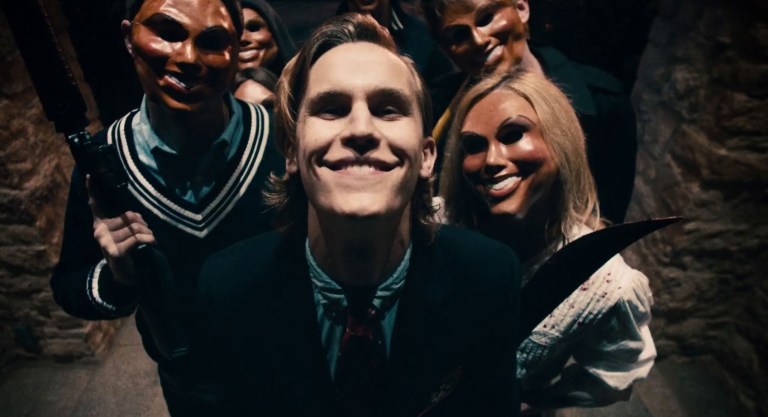
The Purge franchise in its entirety serves as an angry, scathing depiction of politics in America. These movies expose our government as more closely resembling a police state and totalitarian oligarchy than it does a democracy. They depict class inequality, government abuse of power, systemic racism, and the government’s lack of care for its citizens. The New Founding Fathers of America, the ruling party in the United States, has eliminated nearly all crime and unemployment by introducing an annual “purge.” One day a year, from 7 pm to 7 am, all citizens are free to commit crime, including rape and murder, with impunity. Minorities, the poor, and the unhoused run the most risk to their lives. The first movie, which sets the foundation for each that comes after, focuses on a rich family as they spend the night in their highly guarded mansion. Their son ends up letting in a distressed man being hunted down by a masked group of yuppies, making their family a target. Ethan Hawke and Lena Headey star.
See also: 32 Trivia Facts About ‘The Purge’ Universe
Culture Shock (2019)
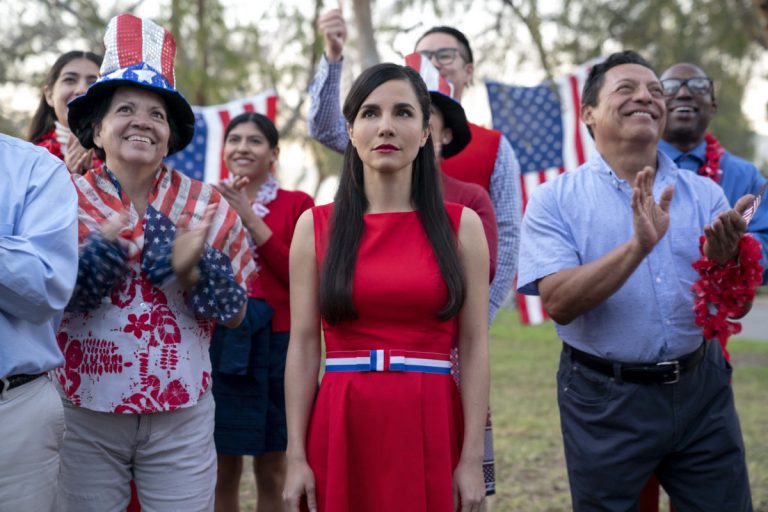
The amazing Gigi Saul Guerrero wrote and directed Culture Shock for the Hulu and Blumhouse Into the Dark film series. Garnering positive reviews and a perfect 100% score on Rotten Tomatoes, it has been named as the best entry in the series by many. Martha Higareda is the lead, and horror icon Barbara Crampton also stars. The Fourth of July themed horror movie highlights the immigrant experience through the story of Marisol (Higareda), a young pregnant Mexican woman who suffers a traumatic ordeal crossing the border into the United States in the pursuit of a better life. Soon, she discovers that the American dream is the biggest lie ever told, a notion explored greatly throughout the film. Other big themes are the dehumanization of migrants, the lack of freedom for those who aren’t white or rich, becoming disconnected from one’s culture through assimilation, and the exploitation of immigrants.
Get Out (2017)
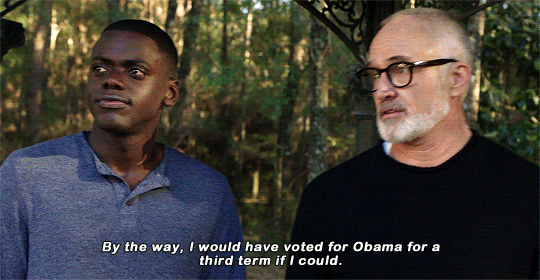
Jordan Peele’s Oscar-winning Get Out is more than an anti-romcom horror and social thriller. The movie is arguably one of the most impactful sociopolitical films of our modern era with its exposé on how white liberal Americans hide their deep-rooted racism and bigotry beneath a progressive veneer. Peele drives the point home that there’s no such thing as “post-racial” America. Get Out also explores the exploitation and fetishization of Black bodies and the enduring history of racialized violence. Daniel Kaluuya is superb in his role as Chris Washington, a Black man who accompanies his white girlfriend, Rose Armitage (Allison Williams), home to meet her parents. The Armitages turn out not to be as liberal and enlightened as they try to portray. Their sinister intentions are revealed through terrifying twists and turns, from Stepford-like Black domestic workers to an eerie auction to hypnosis to body snatching white people.
The Hunt (2020)
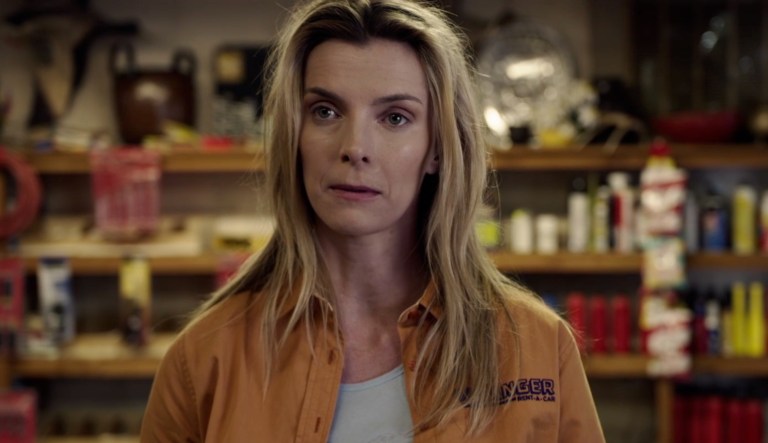
The Hunt is a highly controversial human hunting horror movie that pokes fun at both liberal and conservatives, showcasing the prejudices, absurdities, and hypocrisies of each party. The film functions as a satirical critique of the circus that is the two-party system and political parties as a whole, incorporating strong caricatures of both sides of the political spectrum and nut job conspiracy theories that are prevalent in current American politics. After waking up in a clearing, a group of working-class right-wingers are hunted for sport by a group of out-of-touch liberal elites. Betty Gilpin gives a strong performance as Crystal, a woman who is not to be messed with and should be feared by her pursuers. Hilary Swank devours her role as Athena, a rich and self-interested “social justice warrior.”
Candyman (2021)

Nia DaCosta’s supernatural slasher does a whole lot more than subvert the final girl trope. This sequel to the 1992 original movie sheds light on the racial violence and genocide against Black people that has permeated America since its inception. It’s a cathartic story of revenge and reparations that serves as a shrieking protest against police brutality, gentrification, and the violence of racial inequality. Yahya Abdul-Mateen II stars as Anthony McCoy and Teyonah Parris plays the role of art gallery director Brianna Cartwright, his girlfriend. The Black couple has just moved into a loft in the now gentrified Cabrini neighborhood. After being exposed to the legend of Candyman, Anthony uses the figure’s terrifying history as inspiration for his art, bringing about a wave of violence.
More political horror movies…

Dawn of the Dead (1978) is a critique of consumerism and how Americans have become braindead zombies who are obsessed with superficial comforts. The second film in Romero’s Living Dead franchise focuses on a group of survivors who barricade themselves in a suburban shopping mall as the flesh-eating ghouls cause mass hysteria outside.
The Omen III: The Final Conflict (1981) the now adult Antichrist Damien Thorn (Sam Neill) is appointed as US ambassador to Britain, which primes him for fulfilling his destiny. The film reflects on the abuse of power and how politicians exert that power to subdue and corrupt humanity.
Videodrome (1983) after coming across a TV show depicting real torture and murder, the president of a TV station uncovers a horrifying conspiracy and his body begins to undergo a grotesque transformation. The revolutionary body horror is a meditation on media control, all-consuming technology, and the desensitization to violence.
The Dead Zone (1983) is a cautionary tale against populist candidates who pretend to be “for the people.” A schoolteacher awakens from a five-year coma to discover that he has psychic abilities. After meeting a political candidate for the US senate, he foresees a destruction of great magnitude if the politician is to become elected.
The Stuff (1985) this sci-fi horror is a merciless satire about consumerism, corporations, and capitalism. A mysterious, but delicious calorie-free goo-like substance oozes from the earth and becomes commercialized. The new sweet sensation turns out to mutate those who consume it, turning them into zombie-like beings.
Day of the Dead (1985) is the third installment in Romero’s Night of the Living Dead series. Scientists working on a cure to save the human race are trapped in a missile silo with military personnel, where tensions rise as ghouls gather outside.
Nightbreed (1990) a troubled young man who’s been gaslit into believing he’s a serial killer finds refuge in a mythical underground world where friendly monsters hide from humanity. Clive Barker’s gorgeous world of outcasts, monsters, and demons is an allegory for prejudice against the queer community.
Land of the Dead (2005) zombified ghouls have become the majority of the population, while survivors barricade themselves in a walled city.
The Purge: Anarchy (2014) Leo Barnes (Frank Grillo), a sergeant and grieving father, plans to get vengeance on the night of the Purge, but ends up becoming the protector of a few strangers left stranded out on the streets.
The Purge: Election Year (2016) Leo Barnes is now the head of security for Senator Charlie Roan (Elizabeth Mitchell), a Presidential candidate and front runner for the next election with a target on her back for her intentions of abolishing the Purge. He must fight to protect her and survive throughout the night.
The First Purge (2018) shows how the first Purge was carried out by the New Founding Fathers of America as a test confined to Staten Island. Residents are offered $5,000 to stay during the experiment.
Us (2019) Jordan Peele’s masterpiece of a family’s vacation being disrupted by their doppelgangers is a smart meditation on America’s social class system, this country’s displaced fear of “outsiders,” and systemic oppression.
The Forever Purge (2021) this dystopian horror focuses on a lawless, racist group of masked murderers who decide the Purge hasn’t ended just because the sun has risen. They target an undocumented couple and their white rancher employers.
Soft & Quiet (2022) an extremely uncomfortable horror-thriller about a group of women in a social club that is revealed to be devoted to spreading white supremacy and bigotry. A member has an encounter with someone from her past, setting forth a violent chain of events.
Further reading:
